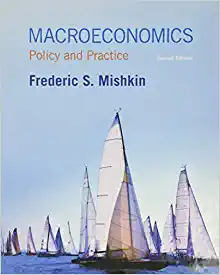Question
7 tackle the following Mark wants to maximize his expected utility. His preferences are represented by the utility function U(y) = y 1 2 where
7 tackle the following
Mark wants to maximize his expected utility. His preferences are represented by the utility function U(y) = y 1 2 where y is a monetary payoff. Mark is offered the following bet on the toss of a coin by Amanda; If the coin comes up tails Amanda pays Mark 1, 000 If the coin comes up heads Mark pays Amanda 1, 000 Mark's initial capital is 10, 000 which he retains in its entirety if he does not take the bet. 1. What is Mark's expected utility if he accepts the bet? 2. Will he accept the bet? Explain your answer. 3. Is Mark risk averse, risk neutral or risk loving? Explain your answer.
Amanda offers Mark an alternative bet whereby if the coin comes up tails Amanda gives him 10, 000 but if the coin comes up heads Mark gives Amanda his entire 10, 000. 4. Show that Mark does not accept this bet. Amanda offers Mark yet another alternative bet whereby Mark still loses his entire 10, 000 if the coin comes up heads, but if the coin comes up tails Amanda pays him50, 000. 5. Does Mark accept this new alternative? Explain your answer. 6. Given that Mark loses his entire10, 000 if the coin comes up heads, what is the smallest amount that Amanda has to pay Mark in the event of tails in order to persuade him to take the bet?
The local government wants to hire a manager to undertake a public project. If the project fails, it will lose 20, 000. If it succeeds, the project will earn 100, 000. The manager can choose to "work" or to "shirk". If she shirks, the project will fail for sure. If she works, the project will succeed half of the times but will still fail half of the times. Measured in monetary terms, the manager's utility is 10, 000 lower if she works than if she shirks. In addition, the manager could earn 10, 000 in another job (where she would shirk). Assume further that both parties are risk neutral. 1. Describe the dynamic game using the extensive form representation. 2. Which is the compensation scheme that maximizes government's utility? Which is the expected wage of the manager in any equilibrium of the game? 3. Do you think the solution will change with a risk-averse manager? 4. Assume that the government prefers to sell the project to the manager. What should be the fee paid to the government?
Discuss the trade-off between insurance and incentives in the presence of moral hazard when the agent is risk-averse. Do you think it is true that a risk-neutral principal should pay more to hire a risk-averse agent than a risk neutral agent? Explain your answer.
Consider the market for health insurance. Suppose that the market is comprised of 4 groups of people of differing risk categories. There are a large and equal number of people in each group, but insurers cannot tell which group a person belongs to (i.e. this is a situation of asymmetric information). Each group faces a risk of requiring medical treatment of value $10,000. Suppose that the willingness to pay of people in each group is as follows: Risk 0.2 0.4 0.6 0.8 willingness to pay 2,500 5,200 6,800 8,500 Actuarially fair premium Risk Premium a. Complete the table of actuarially fair insurance premiums that could be charged to each group separately by an insurance company large enough to diversify the risks. How do these compare to the willingness to pay? b. Suppose now that the risk category is private information. What is the average riskiness of a person seeking insurance? What premium would an insurance company have to charge to break even? c. Will all the agents participate at this price? If not what would be the composition of risks facing the insurer? Would the premium found above be sufficient to cover the risks taken by the insurer? d. Continue with this logic. What will be the price of insurance in the equilibrium and which groups will participate? e. Is this an efficient outcome?
Are the following statements true or false? a. An insurance company must be concerned about the possibility that someone will buy fire insurance on a building and then set fire to it. This is an example of moral hazard. b. A life insurance company must be concerned about the possibility that the people who buy life insurance may tend to be less healthy than those who do not. This is an example of adverse selection. c. In a market where there is separating equilibrium, different types of agents make different choices of actions. d. Moral hazard refers to the effect of an insurance policy on the incentives of individuals to exercise care. e. Adverse selection refers to how the magnitude of the insurance premium affects the types of individuals that buy insurance.
Step by Step Solution
There are 3 Steps involved in it
Step: 1

Get Instant Access to Expert-Tailored Solutions
See step-by-step solutions with expert insights and AI powered tools for academic success
Step: 2

Step: 3

Ace Your Homework with AI
Get the answers you need in no time with our AI-driven, step-by-step assistance
Get Started


